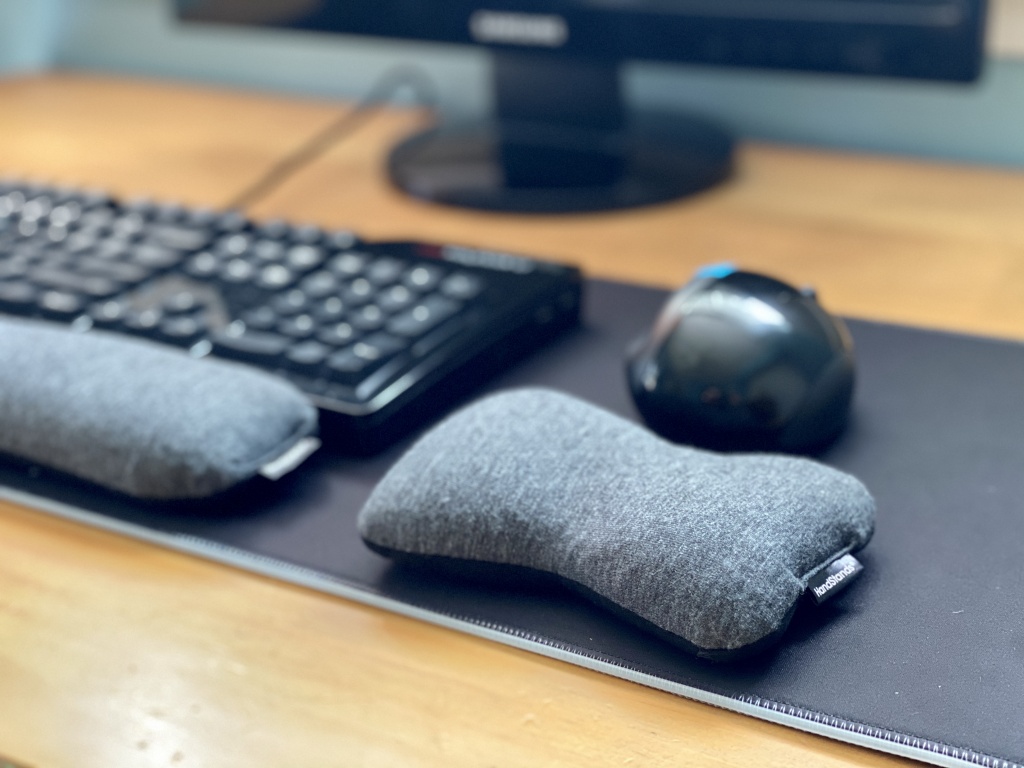Why do you need a wrist rest
Wrist rests are designed to support one key goal: keeping your wrists in a neutral position, not bent upward (extension) or downward (flexion). This neutral alignment helps reduce strain on several key structures in the wrist, particularly the median nerve, which runs through the carpal tunnel alongside the flexor tendons. When your wrist is constantly angled, it can narrow this tunnel and increase pressure on the nerve, contributing to symptoms like tingling, numbness, or pain seen in carpal tunnel syndrome.
Wrist rests also help by distributing pressure more evenly across the forearm and wrist, rather than concentrating force on small areas like the heel of the hand. This can prevent localised irritation, soft tissue compression, and those sore "hot spots" that develop after long hours at a desk.
What to look for in a wrist rest
- Material Matters:
- Gel: Cool and contouring but may wear down over time.
- Memory foam: Comfortable and supportive, ideal for extended use.
- Fabric: Soft and easy to clean, great for low-maintenance setup.
- Right size, perfect fit: Choose one that matches your keyboard or mouse pad to support smooth, natural movement.
- Height alignment: The wrist rest should align with your keyboard or mouse to keep your wrists straight, not tilted up or down.
- Stay-put stability: A non-skid base ensures your wrist rest doesn’t slide around while you work.
How to use it effectively
- Position properly: Place it directly in front of your keyboard or mouse so your wrists rest lightly while your fingers reach the keys or mouse.
- Mind your posture: Adjust your chair and desk to keep your forearms parallel to the floor.
- Take breaks: Even the best wrist rest can’t replace regular breaks and stretches to keep your hands and wrists healthy.



